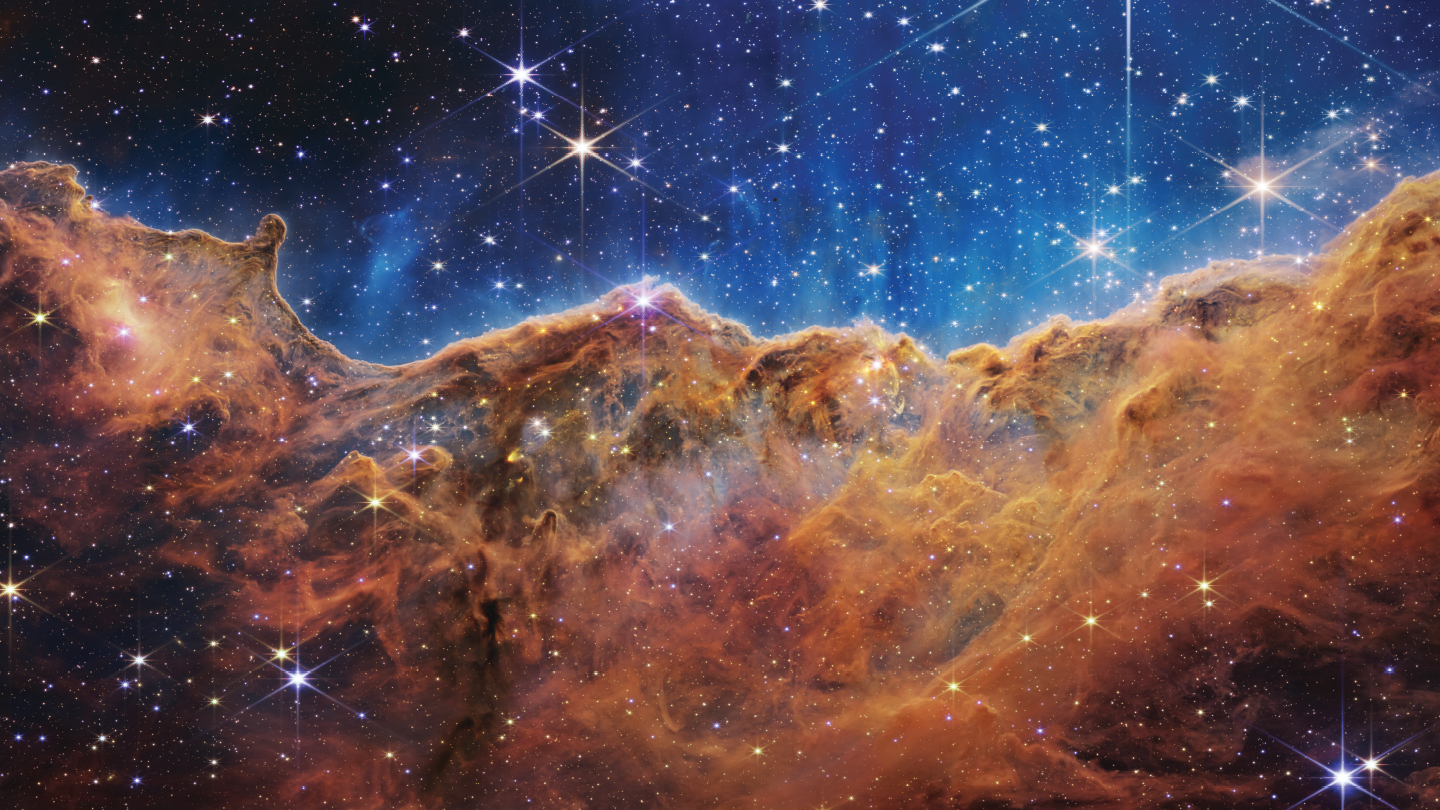In 2022, the James Webb Space Telescope brought us new views of the cosmos
This year marked the end of a decades-long wait for astronomers. The James Webb Space Telescope is finally in action.
The telescope, which launched in December 2021, released its first science data in July (SN: 8/13/22, p. 30) and immediately began surpassing astronomers’ expectations.
“We’ve realized that James Webb is 10 times more sensitive than we predicted” for some kinds of observations, says astronomer Sasha Hinkley of the University of Exeter in England. His team released in September the telescope’s first direct image of an exoplanet (SN: 9/24/22, p. 6). He credits “the people who worked so hard to get this right, to launch something the size of a tennis court into space on a rocket and get this sensitive machinery to work perfectly. And I feel incredibly lucky to be the beneficiary of this.”
The telescope, also known as JWST, was designed to see further back into the history of the cosmos than ever before (SN: 10/9/21 & 10/23/21, p. 26). It’s bigger and more sensitive than its predecessor, the Hubble Space Telescope. And because it looks in much longer wavelengths of light, JWST can observe distant and veiled objects that were previously hidden.
JWST spent its first several months collecting “early-release” science data, observations that test the different ways the telescope can see. “It is a very, very new instrument,” says Lamiya Mowla, an astronomer at the University of Toronto. “It will take some time before we can characterize all the different observation modes of all four instruments that are on board.”
That need for testing plus the excitement has led to some confusion for astronomers in these heady early days. Data from the telescope had been in such high demand that the operators hadn’t yet calibrated all the detectors before releasing data. The JWST team is providing calibration information so researchers can properly analyze the data. “We knew calibration issues were going to happen,” Mowla says.
The raw numbers that scientists have pulled out of some of the initial images may end up being revised slightly. But the pictures themselves are real and reliable, even though it takes some artistry to translate the telescope’s infrared data into colorful visible light (SN: 3/17/18, p. 4).
The stunning photos that follow are a few of the early greatest hits from the shiny new observatory.
Deep space
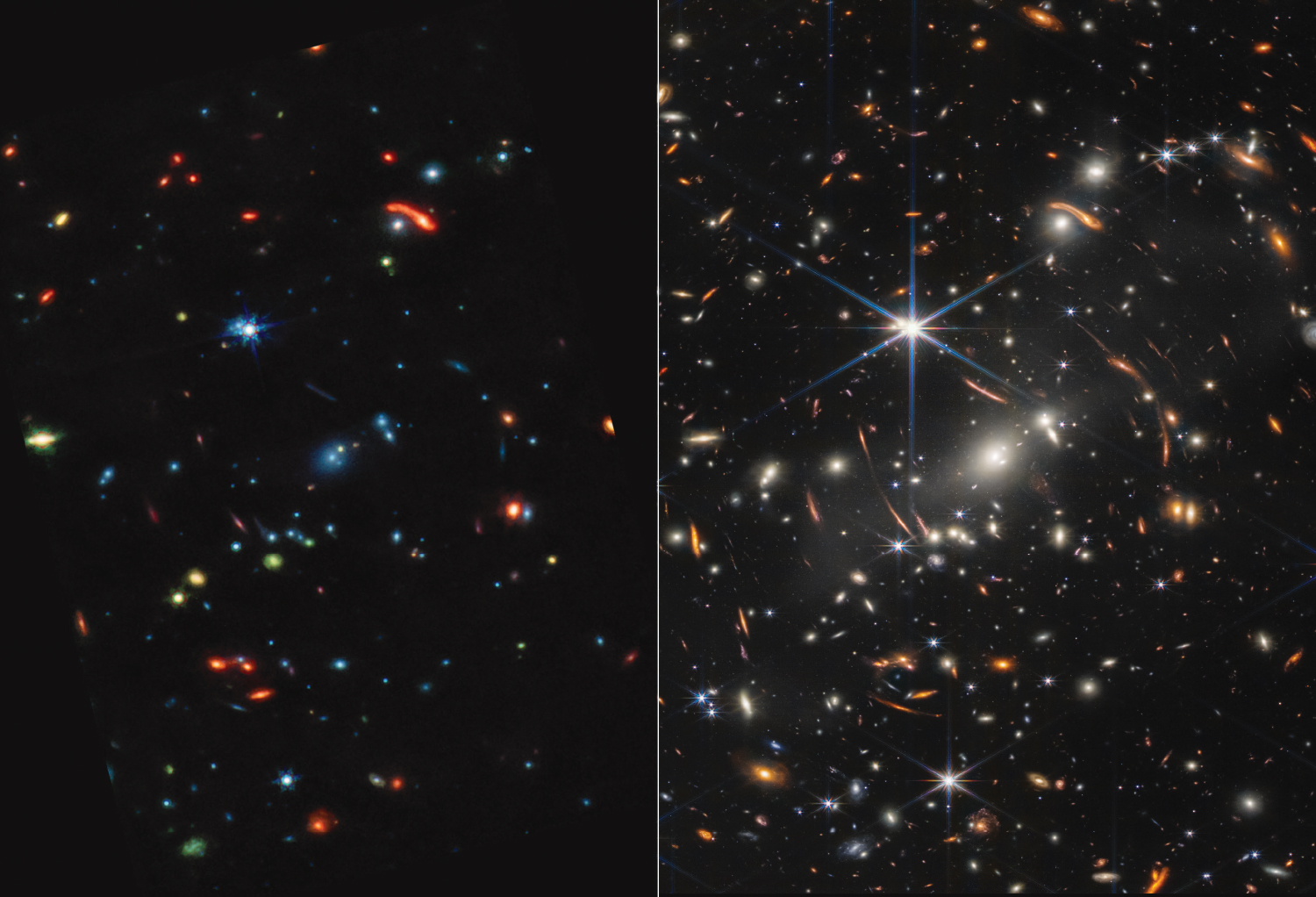
JWST has captured the deepest views yet of the universe (above). Galaxy cluster SMACS 0723 (bluer galaxies) is 4.6 billion light-years from Earth. It acts as a giant cosmic lens, letting JWST zoom in on thousands of even more distant galaxies that shone 13 billion years ago (the redder, more stretched galaxies). The far-off galaxies look different in the mid-infrared light (above left) captured by the telescope’s MIRI instrument than they do in the near-infrared light (above right) captured by NIRCam. The first tracks dust; the second, starlight. Early galaxies have stars but very little dust.
Rings around Neptune
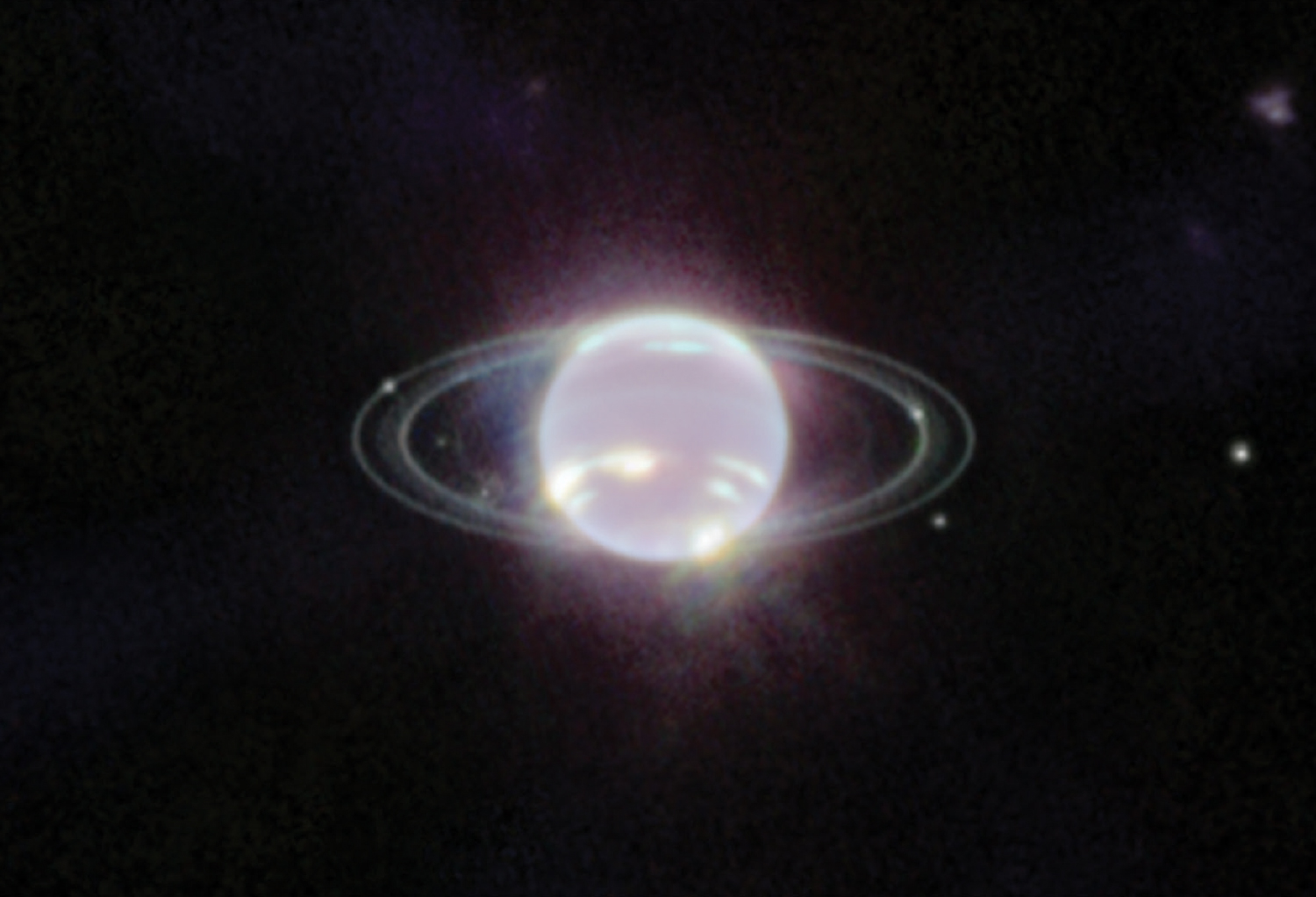
JWST was built to peer over vast cosmic distances, but it also provides new glimpses at our solar system neighbors. This pic of Neptune was the first close look at its delicate-looking rings in over 30 years (SN: 11/5/22, p. 5).
Under pressure
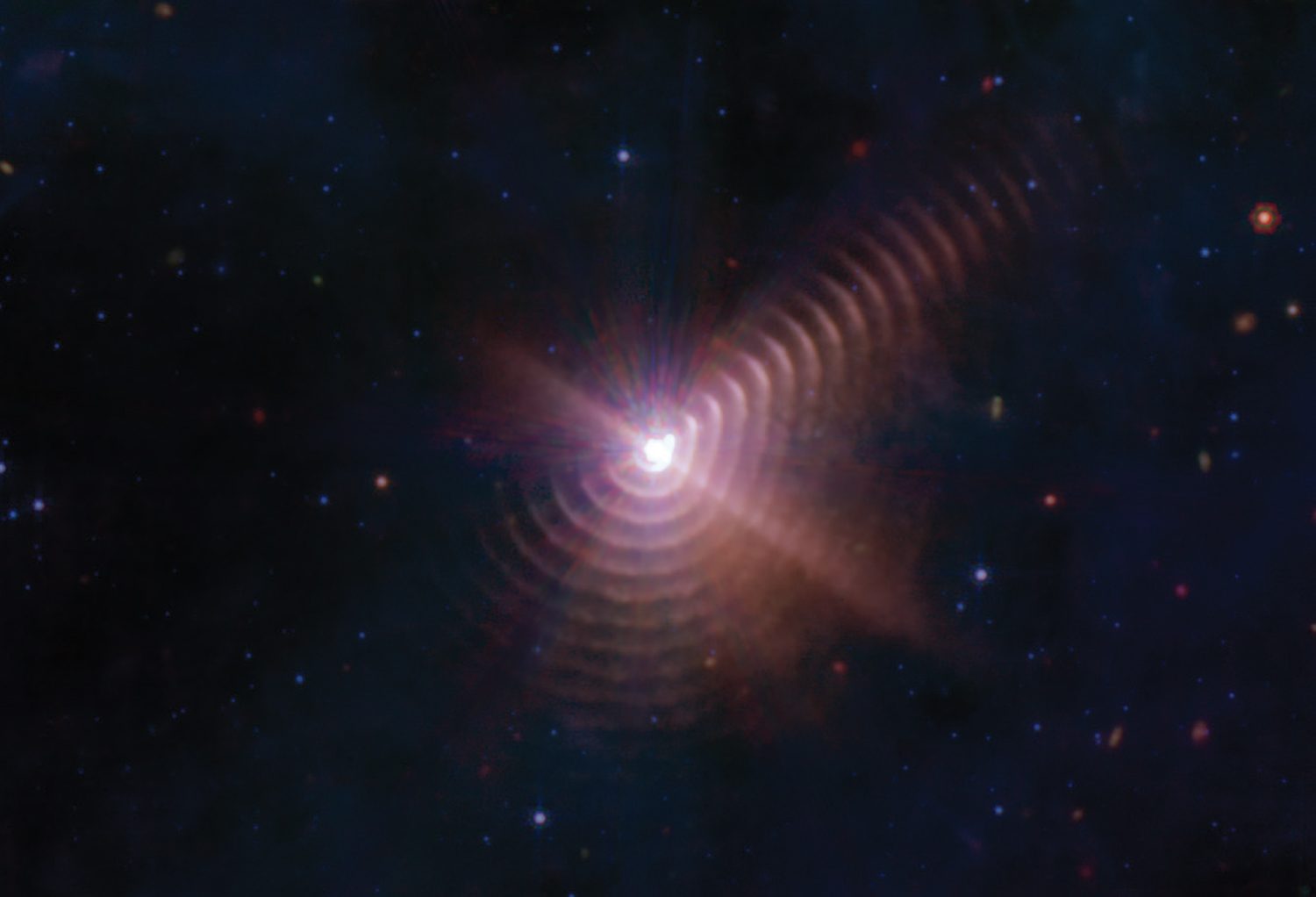
The rings in this astonishing image are not an optical illusion. They’re made of dust, and a new ring is added every eight years when the two stars in the center of the image come close to each other. One of the stars is a Wolf-Rayet star, which is in the final stages of its life and puffing out dust. The cyclical dusty eruptions allowed scientists to directly measure for the first time how pressure from starlight pushes dust around (SN: 11/19/22, p. 6).
Galaxy hit-and-run
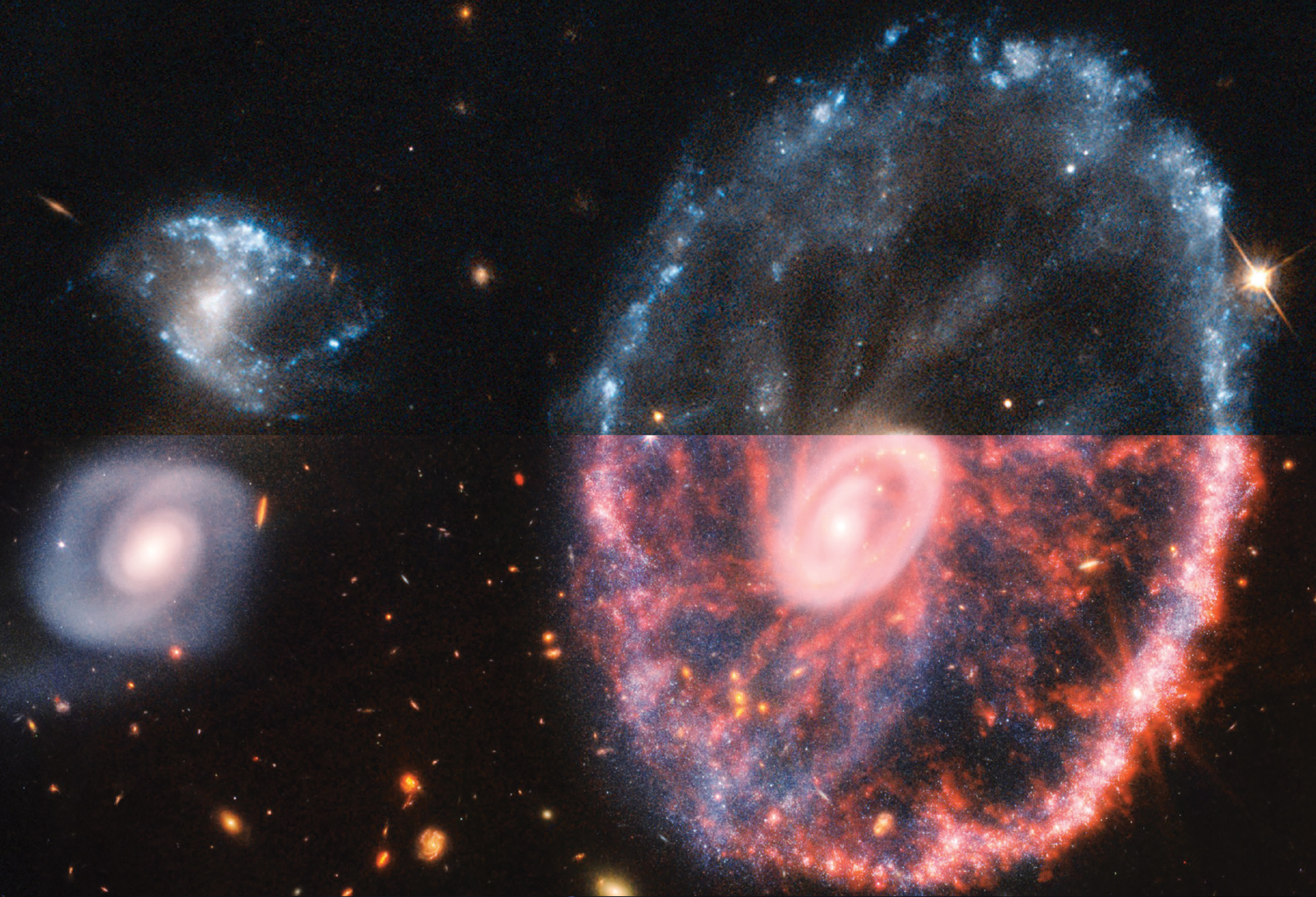
With JWST’s unprecedented sensitivity, astronomers plan to compare the earliest galaxies with more modern galaxies to figure out how galaxies grow and evolve. This galactic smashup, whose main remnant is known as the Cartwheel galaxy, shows a step in that epic process (SN Online: 8/3/22). The large central galaxy (right in the above composite) has been pierced through the middle by a smaller one that fled the scene (not in view). The Hubble Space Telescope previously snapped a visible light image of the scene (top half). But with its infrared eyes, JWST has revealed much more structure and complexity in the galaxy’s interior (bottom half).
Exoplanet portrait
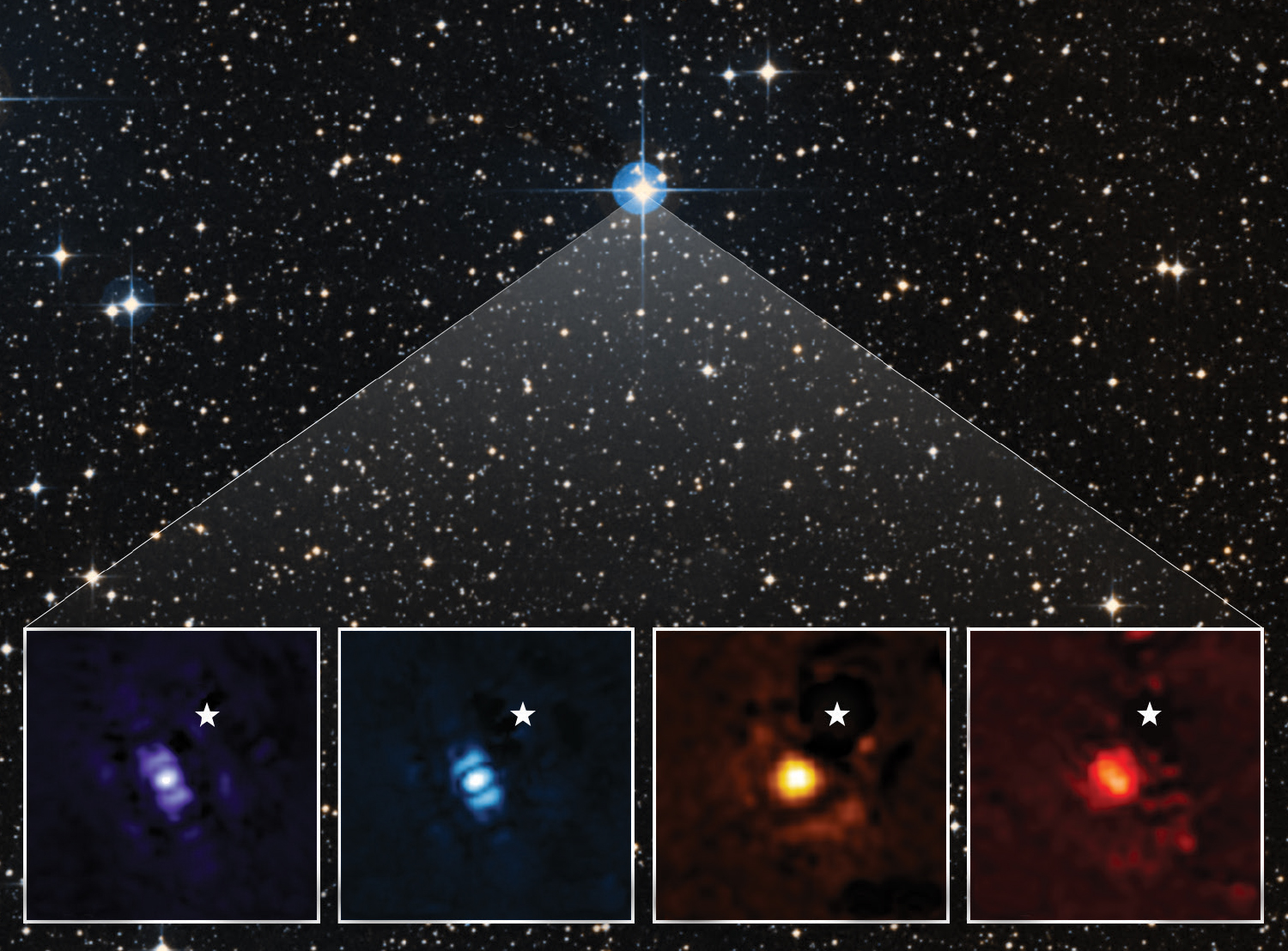
The gas giant HIP 65426b was the first exoplanet to have its portrait taken by JWST (each inset shows the planet in a different wavelength of light; the star symbol shows the location of the planet’s parent star). This image, released by astronomer Sasha Hinkley and colleagues, doesn’t look like much compared with some of the other spectacular space vistas from JWST. But it will give clues to what the planet’s atmosphere is made of and shows the telescope’s potential for doing more of this sort of work on even smaller, rocky exoplanets (SN: 9/24/22, p. 6).
Shake the dust off
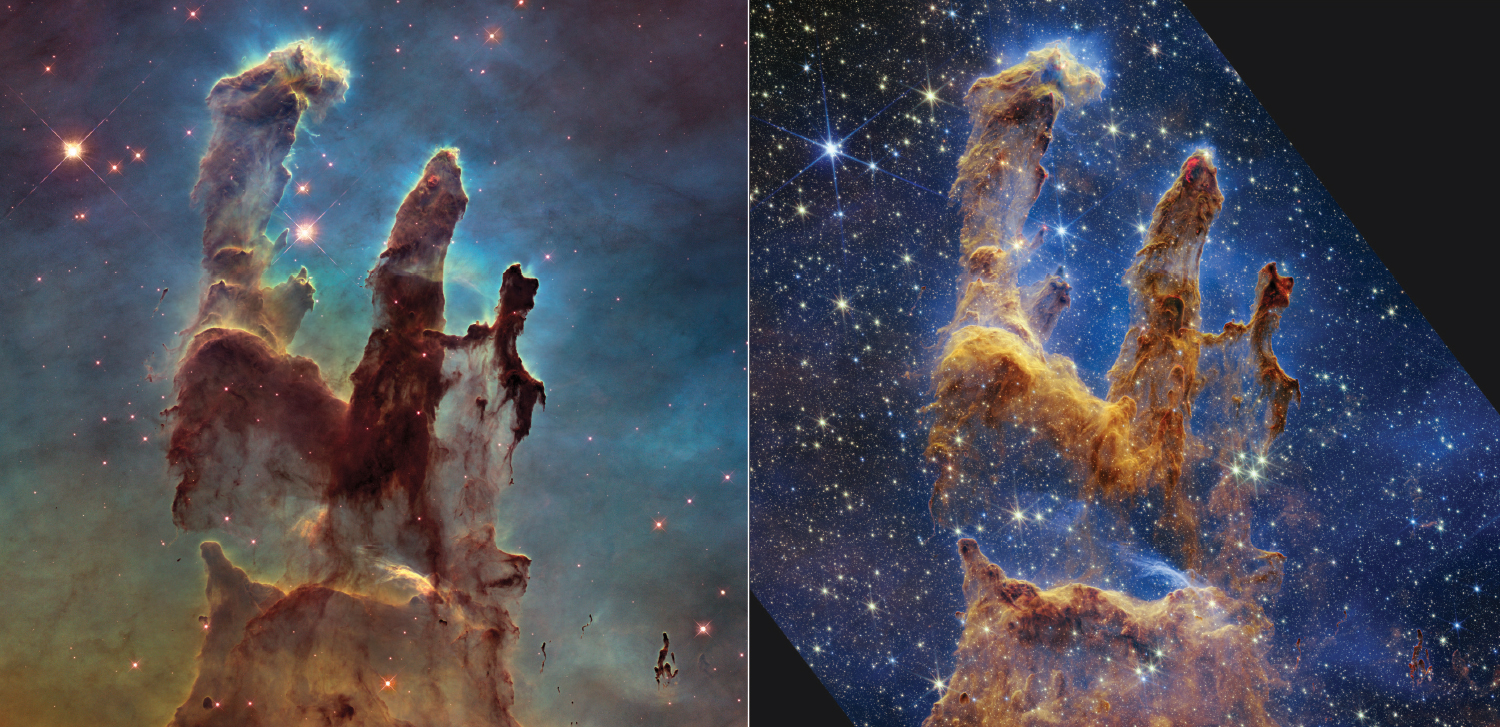
Another classic Hubble image updated by JWST is the Pillars of Creation. When Hubble viewed this star-forming region in visible light, it was shrouded by dust (above left). JWST’s infrared vision reveals sparkling newborn stars (above right).
For all the latest Technology News Click Here
For the latest news and updates, follow us on Google News.

